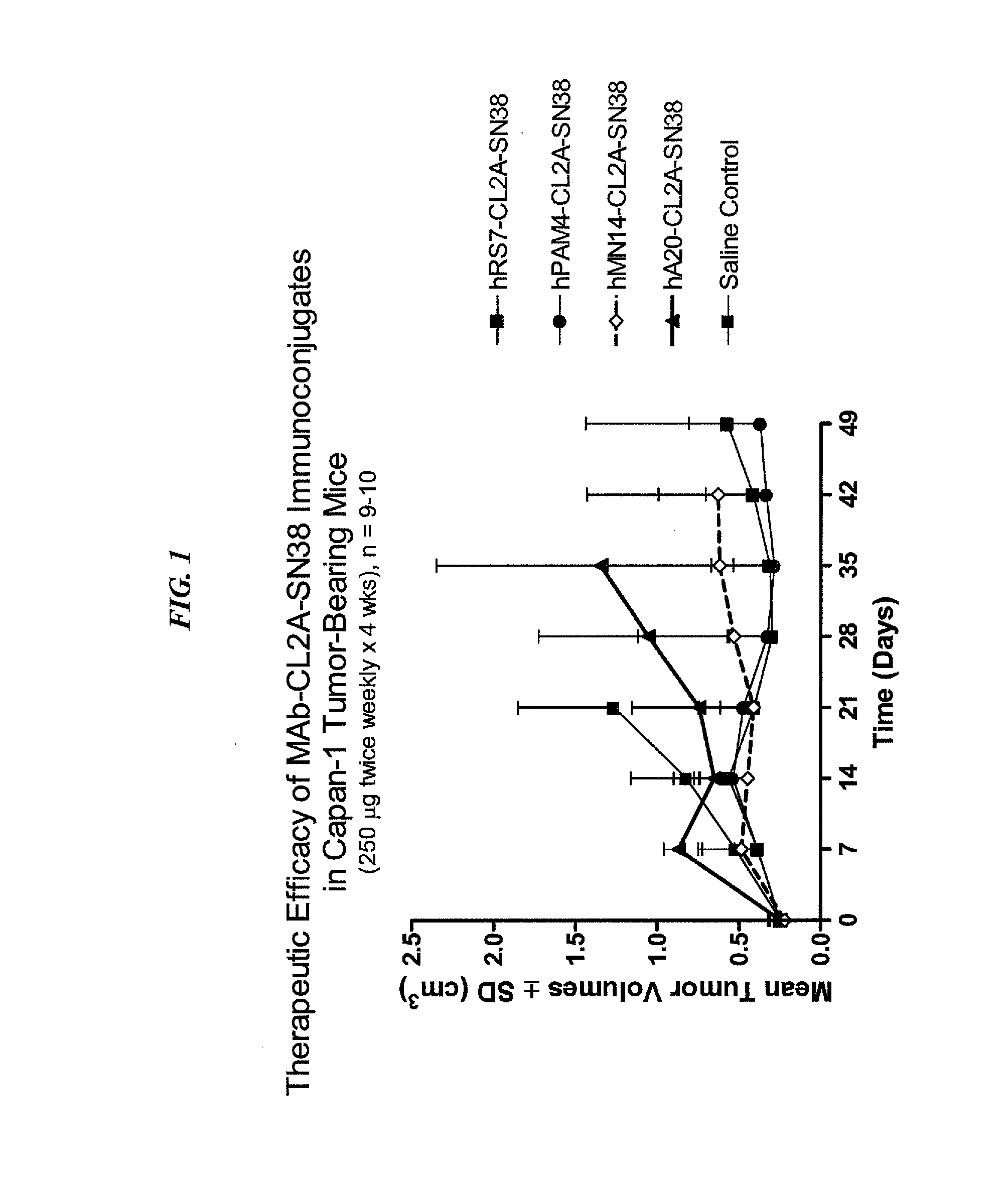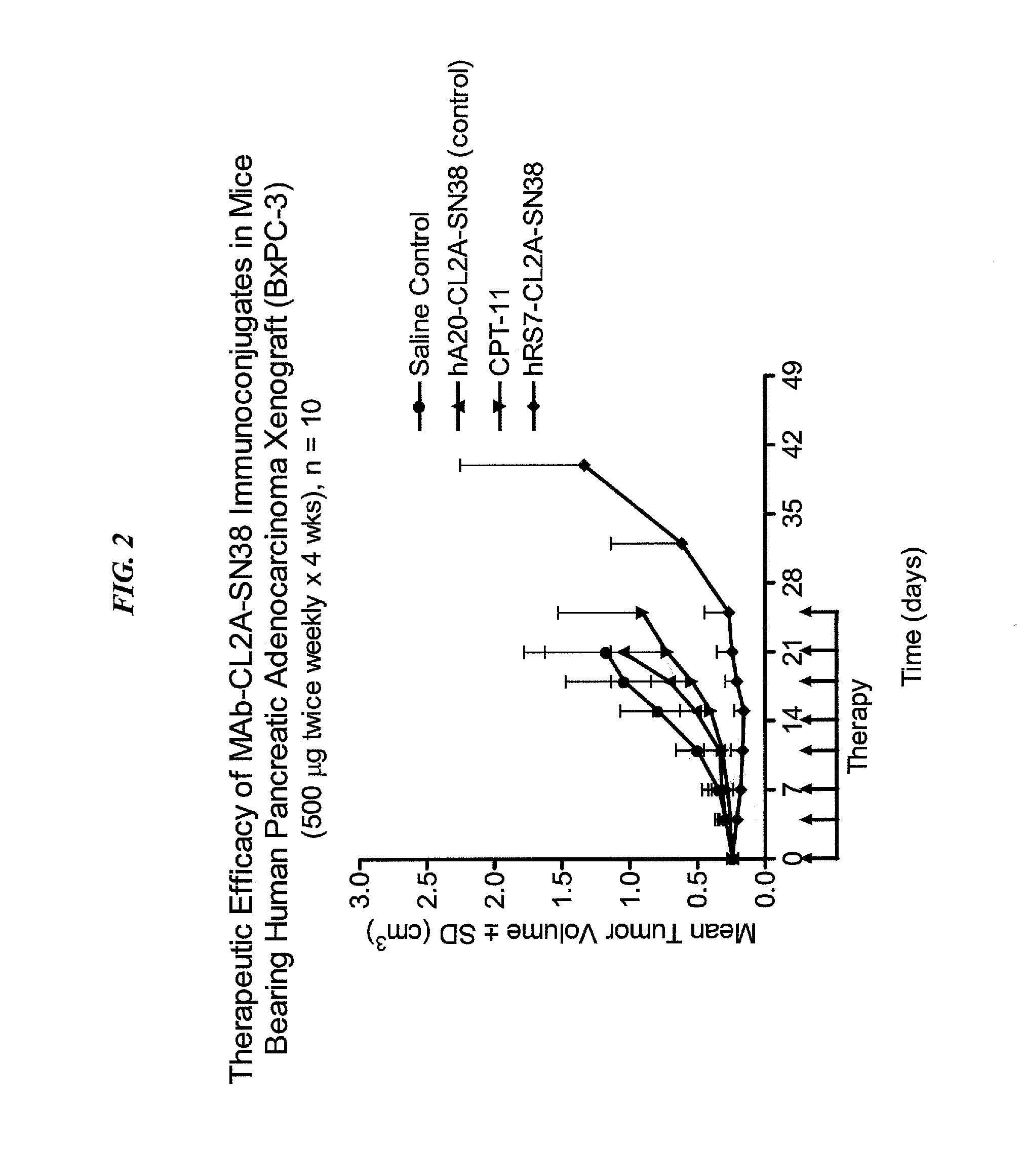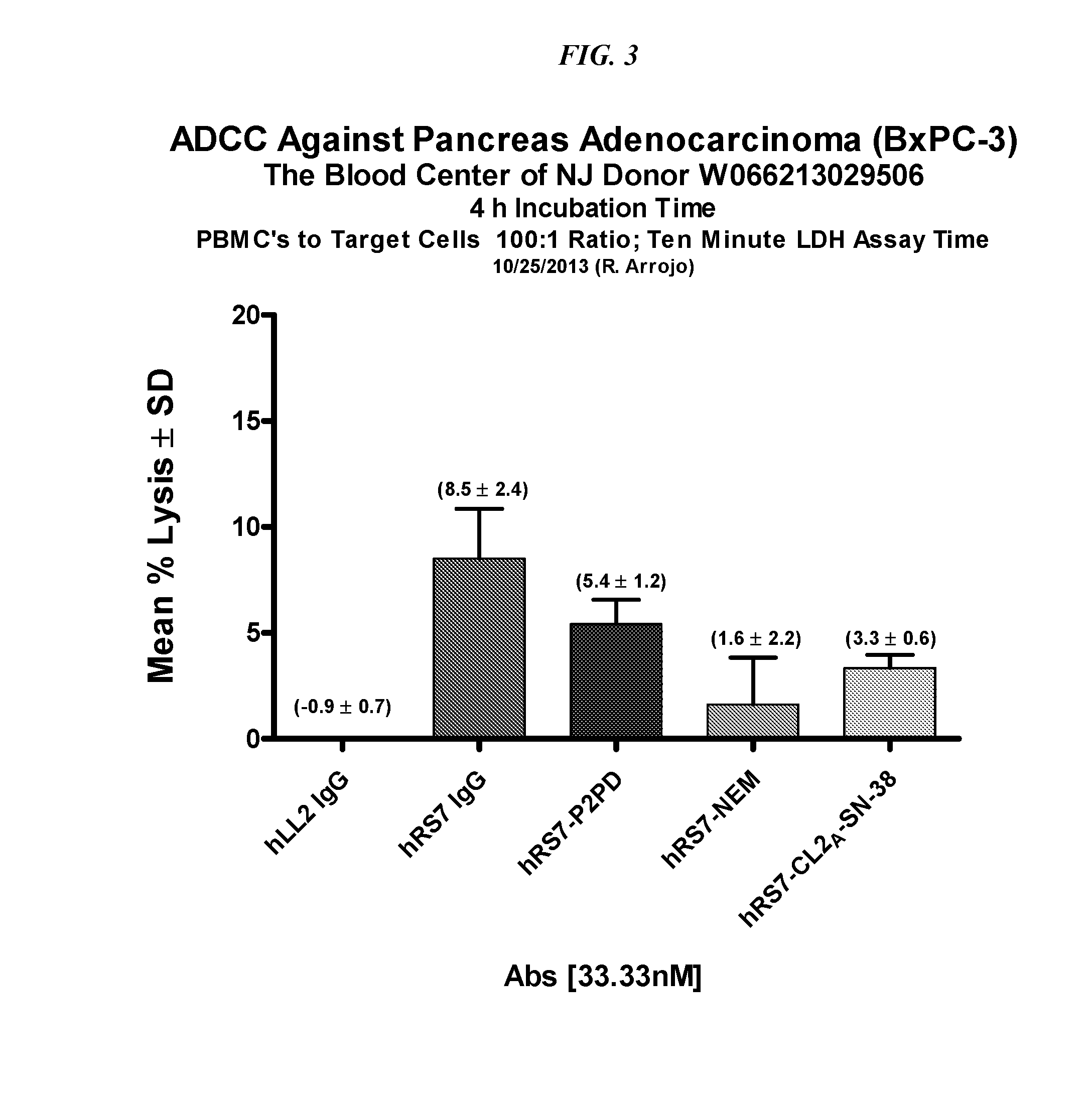Dosages of Immunoconjugates of Antibodies and SN-38 for Improved Efficacy and Decreased Toxicity
a technology of immunoconjugates and antibodies, applied in the field of immunoconjugates or antigen-binding antibody fragments used in the treatment of antibodies or antigen-binding antibody fragments, can solve the problems of reducing immunogenicity, reduce the course of therapy required, reduce certain severe side effects, and reduce dosage and/or frequency of administration.
- Summary
- Abstract
- Description
- Claims
- Application Information
AI Technical Summary
Benefits of technology
Problems solved by technology
Method used
Image
Examples
example 1
Production and Use of Anti-Trop-2-SN-38 Antibody-Drug Conjugate
[0271]The humanized RS7 (hRS7) anti-Trop-2 antibody was produced as described in U.S. Pat. No. 7,238,785, the Figures and Examples section of which are incorporated herein by reference. SN-38 attached to a CL2A linker was produced and conjugated to hRS7 (anti-Trop-2), hPAM4 (anti-MUC5ac), hA20 (anti-CD20) or hMN-14 (anti-CEACAM5) antibodies according to U.S. Pat. No. 7,999,083 (Example 10 and 12 of which are incorporated herein by reference). The conjugation protocol resulted in a ratio of about 6 SN-38 molecules attached per antibody molecule.
[0272]Immune-compromised athymic nude mice (female), bearing subcutaneous human pancreatic or colon tumor xenografts were treated with either specific CL2A-SN-38 conjugate or control conjugate or were left untreated. The therapeutic efficacies of the specific conjugates were observed. FIG. 1 shows a Capan 1 pancreatic tumor model, wherein specific CL2A-SN-38 conjugates of hRS7 (ant...
example 2
ADCC Activity of Anti-Trop-2 ADCs
[0273]The ADCC activity of various hRS7-ADC conjugates was determined in comparison to hRS7 IgG (FIG. 3). PBMCs were purified from blood purchased from the Blood Center of New Jersey. A Trop-2-positive human pancreatic adenocarcinoma cell line (BxPC-3) was used as the target cell line with an effector to target ratio of 100:1. ADCC mediated by hRS7 IgG was compared to hRS7-Pro-2-PDox, hRS7-CL2A-SN-38, and the reduced and capped hRS7-NEM. All were used at 33.3 nM.
[0274]Results are shown in FIG. 3. Overall activity was low, but significant. There was 8.5% specific lysis for the hRS7 IgG which was not significantly different from hRS7-Pro-2-PDox. Both were significantly better than hLL2 control and hRS7-NEM and hRS7-SN-38 (P<0.02, two-tailed t-test). There was no difference between hRS7-NEM and hRS7-SN-38.
example 3
Efficacy of Anti-Trop-2-SN-38 ADC Against Diverse Epithelial Cancers In Vivo
[0275]The purpose of this study was to evaluate the efficacy of an SN-38-anti-Trop-2 (hRS7) ADC against several human solid tumor types, and to assess its tolerability in mice and monkeys, the latter with tissue cross-reactivity to hRS7 similar to humans. Two SN-38 derivatives, CL2-SN-38 and CL2A-SN-38, were conjugated to the anti-Trop-2-humanized antibody, hRS7. The immunoconjugates were characterized in vitro for stability, binding, and cytotoxicity. Efficacy was tested in five different human solid tumor-xenograft models that expressed Trop-2 antigen. Toxicity was assessed in mice and in Cynomolgus monkeys.
[0276]The hRS7 conjugates of the two SN-38 derivatives were equivalent in drug substitution (˜6), cell binding (Kd˜1.2 nmol / L), cytotoxicity (IC50˜2.2 nmol / L), and serum stability in vitro (t / 1 / 2˜20 hours). Exposure of cells to the ADC demonstrated signaling pathways leading to PARP cleavage, but differ...
PUM
| Property | Measurement | Unit |
|---|---|---|
| Fraction | aaaaa | aaaaa |
| Fraction | aaaaa | aaaaa |
| Fraction | aaaaa | aaaaa |
Abstract
Description
Claims
Application Information
 Login to View More
Login to View More - R&D
- Intellectual Property
- Life Sciences
- Materials
- Tech Scout
- Unparalleled Data Quality
- Higher Quality Content
- 60% Fewer Hallucinations
Browse by: Latest US Patents, China's latest patents, Technical Efficacy Thesaurus, Application Domain, Technology Topic, Popular Technical Reports.
© 2025 PatSnap. All rights reserved.Legal|Privacy policy|Modern Slavery Act Transparency Statement|Sitemap|About US| Contact US: help@patsnap.com



